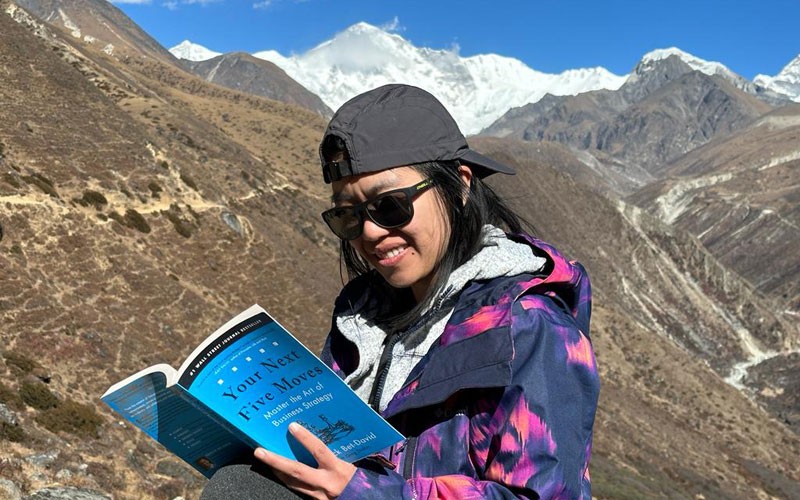
Trekking in Nepal
By Alpine

The Everest Base Camp Trek is considered a moderately challenging trek and suitable for all age groups. Despite not having challenges involving technical climbing, it still requires good preparation before embarking on the journey. You will be hiking for 6-7 hours on average, consistently, for around two weeks (depending on your itinerary), with significant gains in elevation and unpredictable weather changes.
You should begin your training at least 1-2 months prior to your trek. You should work on many layers of your health, such as endurance, stamina, and strength. It should mainly focus on building up cardiovascular strength, as the Himalayas challenge your body on a lot of levels.
Another aspect is the elevation. At 5,364 m (17,598 ft) above sea level, the Everest Base Camp is not actually the highest point of the trek; it is Kala Patthar, with an altitude of 5,644 m (18,519 ft) above sea level. And the higher you go, the more challenging it is to trek. But with the right preparation and training, you can turn it around and have the best trekking experience. This training will not only be for the base camp trek but also for the Gokyo Lakes Trek and the Three High Passes Trek.
People who are trekking for the first time in the Himalayas of Nepal often underestimate how challenging it can be and come unprepared. It is not only a matter of physical fitness but also having proper equipment and gear, mental strength, and, most of all, adapting to the high altitude.
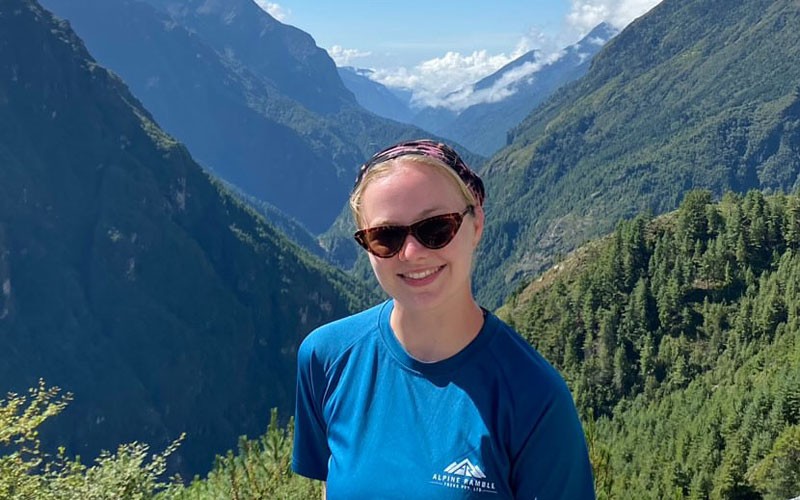
Training and preparation allow you to have a smooth trekking experience, as it will be easier for your body to adapt and hike without any problems. It will help you to avoid even common problems, ensuring a safe trek from start to finish. By training, you will keep your body healthy and mentally prepare yourself for the rugged terrain of the Khumbu region.
First and foremost, and it cannot be emphasized enough, is to get good-quality trekking boots. Your feet are the most important asset and you need to take care of them. Wearing shoes that are not right for you will only cause problems in the long run. Investing in good trekking shoes is the right way to commit to the trek. Wearing the shoes before your official trek will allow your feet to get used to the shape of the shoes and know if they are comfortable or not. There are many brands that make good trekking shoes, and you can buy the one you are comfortable with.
After that is settled, create a plan for your training. It should be well-rounded with a good exercise regimen and dietary plans. Your physical strength depends on your diet. Once you have made a planner for your exercises and diets, you are ready to begin.
There are five major aspects that require extra focus:
Cardiovascular endurance (aerobic exercises)
Strength and endurance (strength-building exercises)
Acclimatization to altitude
Diet and hydration
Mental preparation
Trekking to Everest means you will be carrying a load on your back. The training should have equal parts indoors and outdoor exercises. Create a routine that fits you and be consistent with it. Running on a gym treadmill and doing weight lifts will not be enough; you should also go hiking on hills or mountains near you to familiarize yourself with the rough ups and downs of the trail. Focus on exercises that optimize your cardiovascular strength.
Starting your exercise with heavy routines right off the bat is not good; instead, start with minimal, simple exercise routines and increase your flow as you get more used to them. These exercises can be easily done at home, in the gym, or outdoors.
One of the main aspects of trekking is having to carry your belongings in your backpack. You might hire a porter to carry the maximum load but you still have to carry some essentials by yourself. And also, you might not prefer to hire a porter so in that case, you will be carrying a heavy load all by yourself, which will weigh a significant amount. Therefore, it is crucial to condition your body to carry a heavy backpack.
You will need to focus on exercise that will help you strengthen your back, shoulders, leg muscles, and core strength. You should also focus on flexibility and being able to move around freely with a weight on your back. One of the main things you need to be prepared for is the steep climb in the mountains with a stoney trail.
You can be a person in peak physical shape who has a solid exercise regime, but during the trek, if you are not acclimated properly, it can be a problem. The higher you go, the less oxygen there is. It is easier to tire and get out of breath as you trek to higher altitudes. While acclimating to higher altitudes is usually a crucial part of the trek, there are ways to prepare beforehand.
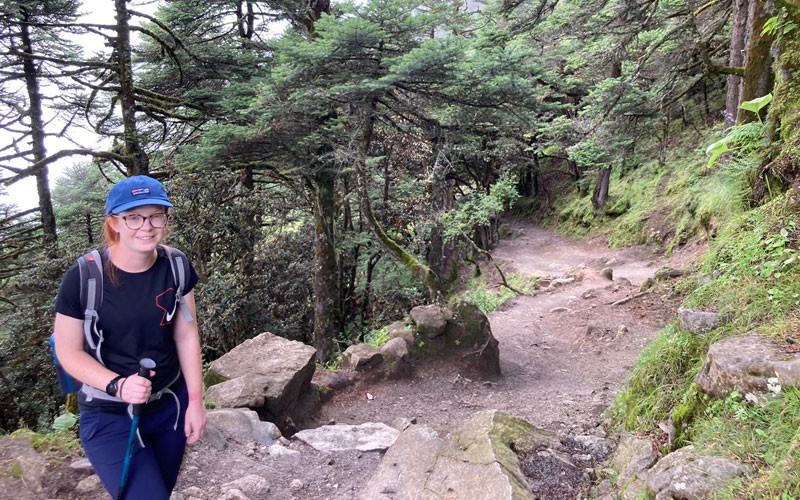
One of the best things you can do to prepare is go on another short, high-altitude trek, such as the Annapurna Base Camp Trek or the Langtang Valley Trek, before finally doing the EBC Trek. This will help you acclimatize more effectively and help your body adapt to high elevations easily. But in case it is not possible, the best way is to ascend slowly during the trek and practice the “trek high, sleep low” strategy.
The backbone of all the above-mentioned points is a proper diet and hydration. The type of food you consume has a large impact on your health. The trek you are preparing for is one that will demand a lot of physical and mental strength, and it cannot be stressed enough how important a well-rounded diet is before and even during the trek.
The most crucial thing is to maintain your energy levels during your training, especially when you are hiking through some of the tallest peaks in the world. Foods high in carbs, fiber, and protein are the best options. But consulting a nutritionist can be a big help.
The level of water regulates your bodily functions. No matter if you are training or on the trek itself, it is extremely important to consume 2-3 liters of water. Dehydration can cause a number of problems, such as headaches and muscle cramps, and even induce altitude sickness. Therefore, you should keep your hydration in check to avoid these problems during the trek.
While it is important to be a realist, it should also come with being optimistic. The mountains can give you quite a challenge. It will not only be a physical challenge but also an emotional trial. Maintaining a positive attitude and not succumbing to the stress of trekking is fundamental. There will be times where you will feel the immense pressure of the trek because of both physical and emotional factors, but crumbling due to some inconveniences can cost you the entire trek, which you spent a hefty amount of money on.
Preparing yourself mentally for any difficult situation that may arise during the trek will give you the strength to tackle any problem head-on and successfully complete the trek. Because it is your attitude towards any situation that determines your experience.
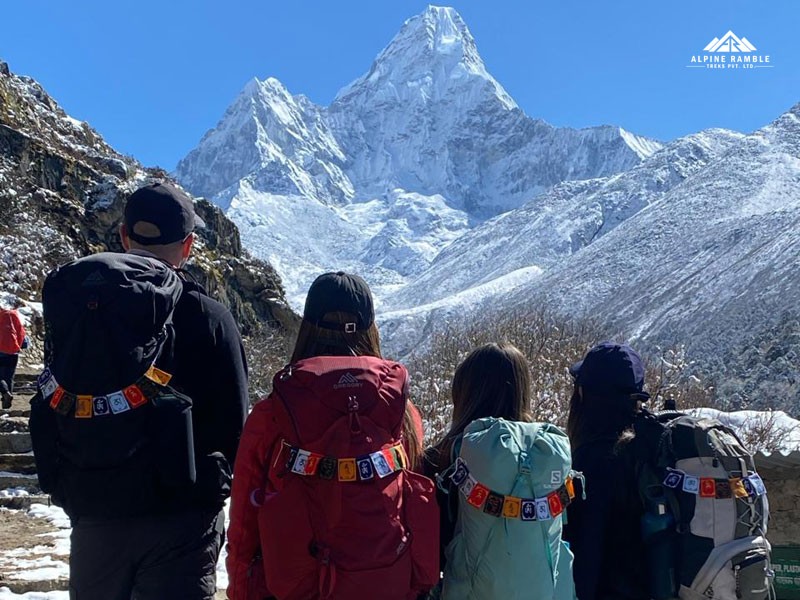
Every day consists of the same routine so it is not hard to stay consistent. However, some days can be more challenging than others, either in terms of a formidable trekking trail or altitude gain. So every day, you should begin by stretching, eating a hearty breakfast, and hydrating before your trek begins. During the trek, you should be very open about how you are feeling and communicate with the guide or your team, especially if you are not feeling well. Making sure to eat and hydrate properly will help you avoid muscle cramps and altitude sickness.
We talked about the physical and mental preparation and training for the Everest Base Camp Trek, but there are so many more aspects that play a vital role in determining a smooth trekking experience, and they are discussed below:
Trekking is not something that you can do on a whim or without a proper plan. There are specialized clothes and gear that are specifically made for trekking. The clothes and shoes you wear every day are not suitable for trekking. We have already established that shoes are the backbone of trekking, but your clothes are of equal importance.
The trekking clothes consist of fleece tops and bottoms, a Gore-tex jacket, a down jacket, a fleece jacket with thick socks and winter caps and many more. These clothes are light-weight and quick-dry, which is the exact type of clothing you will require during a trek. It is a one-time investment that will last you for years to come. Thus, buying clothes made specifically for trekking is essential.
Another thing to follow without any compromise is layering during the trek. One might think that a big and thick down jacket will be enough to combat the chilling cold of the Himalayas but that could not be further from the truth. In fact, wearing fewer layers makes you susceptible to catching a cold even faster.
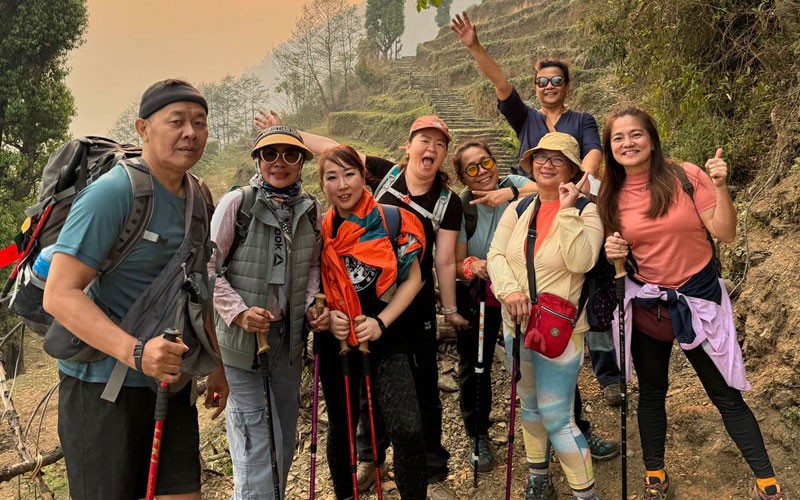
The mountains are known to be windy and the cold air is coming directly from the cold mountain tops. But while trekking, it is common to feel hot and sweat, which makes the trekkers want to remove their jackets. But if you are only wearing a flimsy t-shirt inside and continue your journey, it will lead you to get sick faster. You will easily get a mountain cough, which will disrupt your entire trekking experience. And in the worst-case scenario, there is a chance of getting hypothermia. All of this can be avoided if you wear your clothes smartly.
base layer,
mid-layer
outer layer
The base layer is the innermost layer, which is responsible for keeping you warm and regulating the body temperature. They are thermal clothing, and you should carry two pairs. One you will wear during the hike, which is thin and light. While the other one is thick and keeps you warm when you are done with the day, get ready for bed.
The mid-layer is important to keep insulation in your body so that you do not lose body heat while not letting the outside cold enter your body. They are usually fleece jackets and pants, or down jackets. This is the layer that will make sure you remain warm and cozy at all times.
The outer layer is the capstone of the proper trekking outfit. These are the waterproof and windproof jackets and pants that will protect you from all these elements. The jackets should be Gore-tex, which won’t restrain airflow in your body while maintaining warmth.
The Everest Base Camp Trek is a pretty normal trek, meaning it does not require any technical learning to accomplish this trek. So the only gear you really require are the trekking poles. Trekking poles can be a great aid for trekkers who need support during the trek. Especially hiking downhill can be quite challenging and the use of trekking poles can make it a whole lot easier. Therefore, you need to familiarize yourself with how to use trekking poles in different situations. It will only make your trek easier if you use it correctly or it will just be another weight for you to carry.
Trekking on the first day can be very exciting and people will be bursting with energy to hike. And they often walk fast with a lot of energy in the beginning, which is not inherently a bad thing if you can keep the same energy throughout the day. But most of the time, that energy just fizzles out and you will start to feel tired very soon. Which is why you should always walk at a maintained pace, which will not only allow you to save your energy the entire day but also prevent you from feeling tired and fatigued.
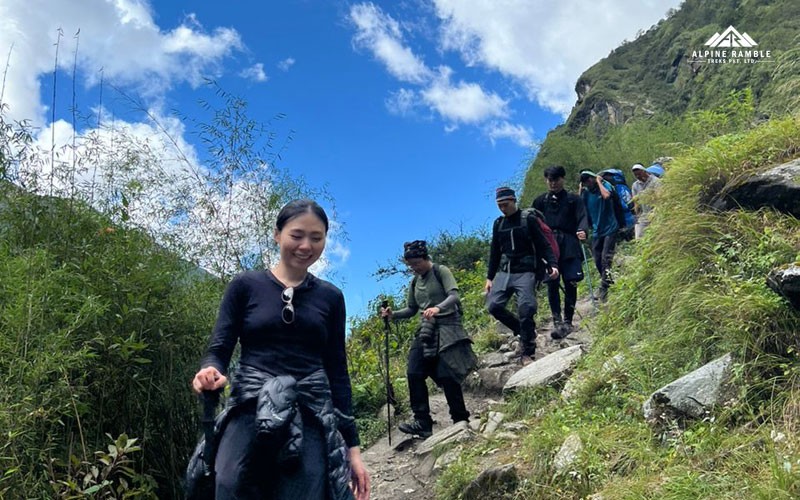
One important thing to note is that trekking is not a competition and not about who gets to the destination first. You should enjoy the walk, the challenges, and, most importantly, the beautiful views that you are surrounded by. Maintaining a steady pace at which you are comfortable will make you enjoy the trek a lot more.
No matter if it is during your training for the Everest Base Camp Trek or during the trek itself, you need to give yourself time to rest and relax. If you have strained yourself too much, then you need to give yourself some time to recover. Resting your mind and body is part of the training. Allow yourself to rest and let loose a few days before you trek, while keeping yourself active through some light stretching or yoga.
The Everest Base Camp Trek, despite being a moderately challenging trek, can be done by people of all age groups and sizes. With the right training and preparation, it can be accomplished in a smooth manner. The above-mentioned guidelines are the baseline for your training regimen. Keeping your physical and mental health in check is the most fundamental aspect of a good trekking experience. This is directly proportional to having a good diet and hydration before and during the trek.
Along with achieving peak physical fitness and mental resolve, clothing and gear also play a vital role. Having proper trekking clothes and gear will save you from a mountain of problems, pun intended. But also, make sure to give yourself plenty of time to rest, relax, and recover your body from the intense training. Consistency is the key.
So now you are ready to embark on the trek of a lifetime to Everest Base Camp. If you are looking to know more, we organize and operate the Everest Base Camp Trek and other destinations like Annapurna Base Camp Trek, Langtang Valley Trek, Manaslu Circuit Trek, and Annapurna Circuit Trek throughout the year. We have a highly qualified team and offer the best service in the entire country. Get in touch with us via email at alpineramble@gmail.com or WhatsApp at +977 985-1175531, and let us be at your service.